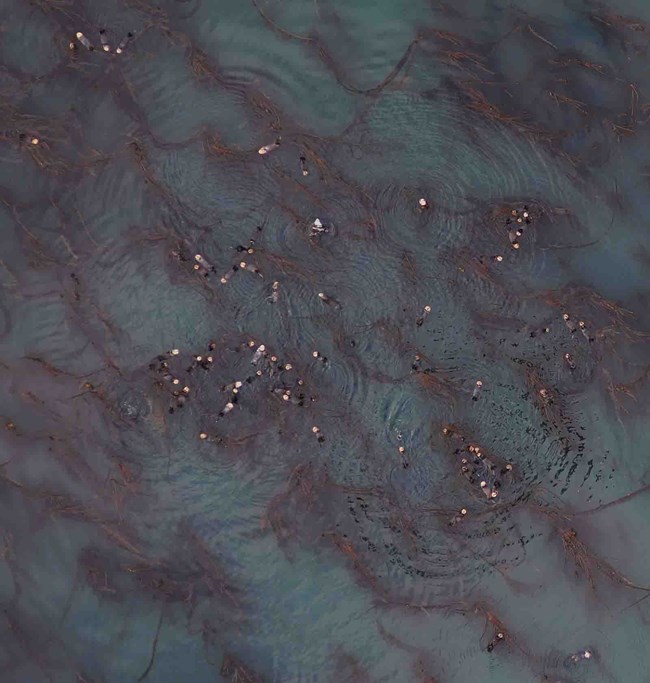Last updated: December 1, 2020
Article
Sea Otter Monitoring Methods

Estimating occupancy and abundance using aerial images with imperfect detection
Abstract
Species distribution and abundance are critical population characteristics for efficient management, conservation, and ecological insight. Point process models are a powerful tool for modelling distribution and abundance, and can incorporate many data types, including count data, presence-absence data, and presence-only data. Aerial photographic images are a natural tool for collecting data to fit point process models, but aerial images do not always capture all animals that are present at a site. Methods for estimating detection probability for aerial surveys usually include collecting auxiliary data to estimate the proportion of time animals are available to be detected.We developed an approach for fitting point process models using an N-mixture model framework to estimate detection probability for aerial occupancy and abundance surveys. Our method uses multiple aerial images taken of animals at the same spatial location to provide temporal replication of sample sites. The intersection of the images provide multiple counts of individuals at different times. We examined this approach using both simulated and real data of sea otters (Enhydra lutris kenyoni) in Glacier Bay National Park, southeastern Alaska.
Using our proposed methods, we estimated detection probability of sea otters to be 0.76, the same as visual aerial surveys that have been used in the past. Further, simulations demonstrated that our approach is a promising tool for estimating occupancy, abundance, and detection probability from aerial photographic surveys.
Our methods can be readily extended to data collected using unmanned aerial vehicles, as technology and regulations permit. The generality of our methods for other aerial surveys depends on how well surveys can be designed to meet the assumptions of N-mixture models.
Williams, P. J., M. B. Hooten, J. N. Womble, and M. R. Bower. 2017. Estimating occupancy and abundance using aerial images with imperfect detection. Methods in Ecology and Evolution 2017;00:1-11.
